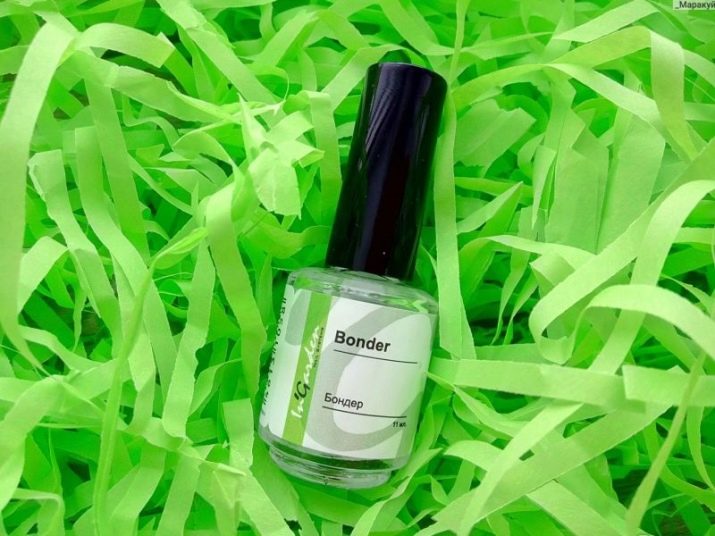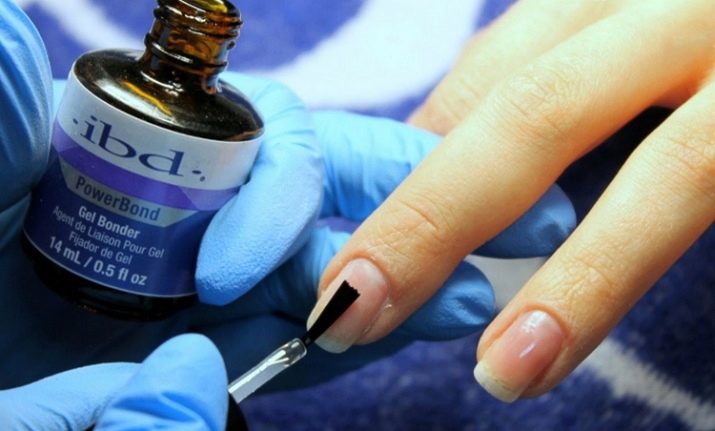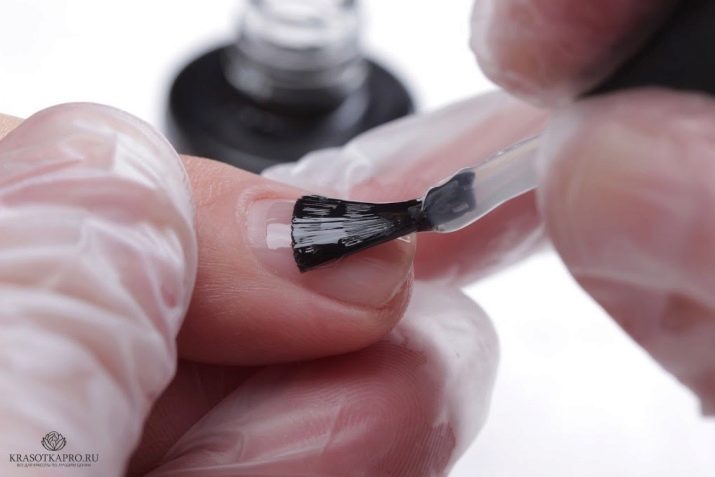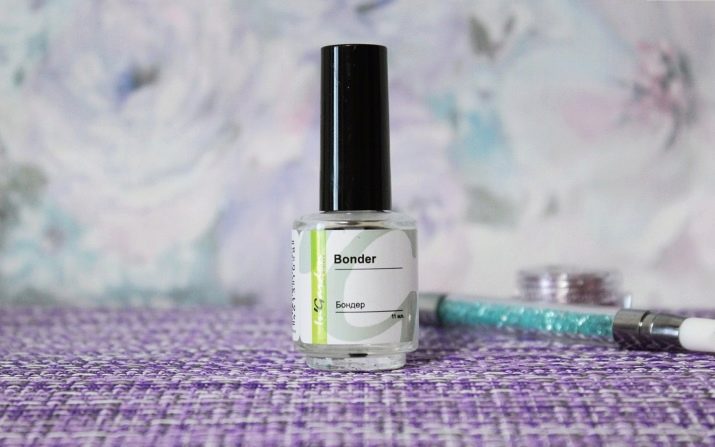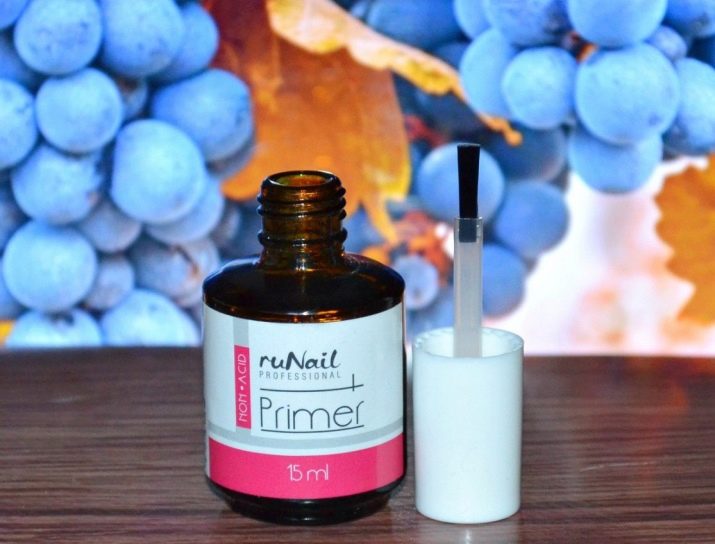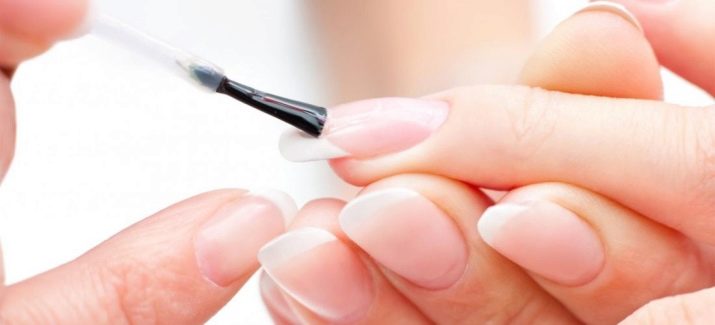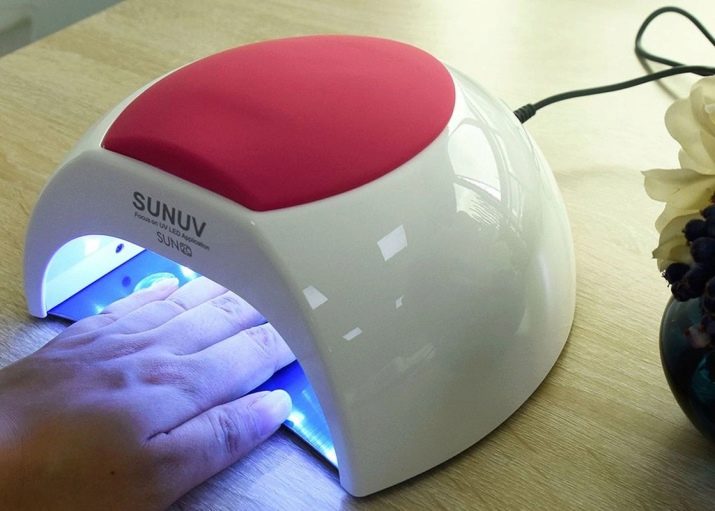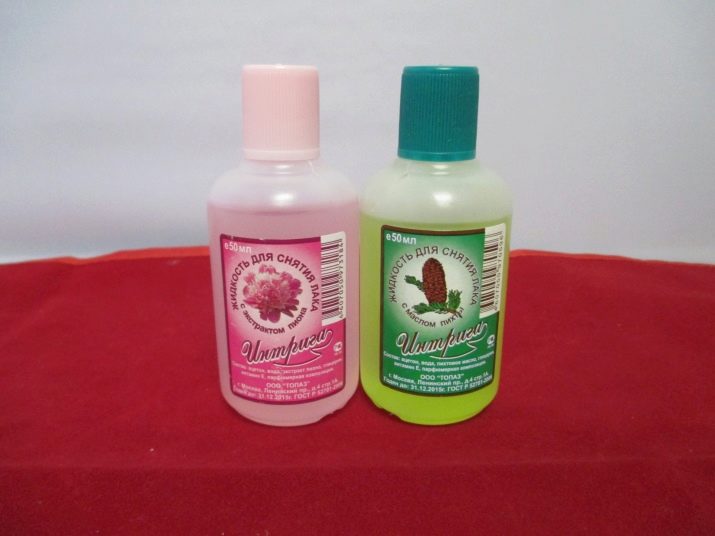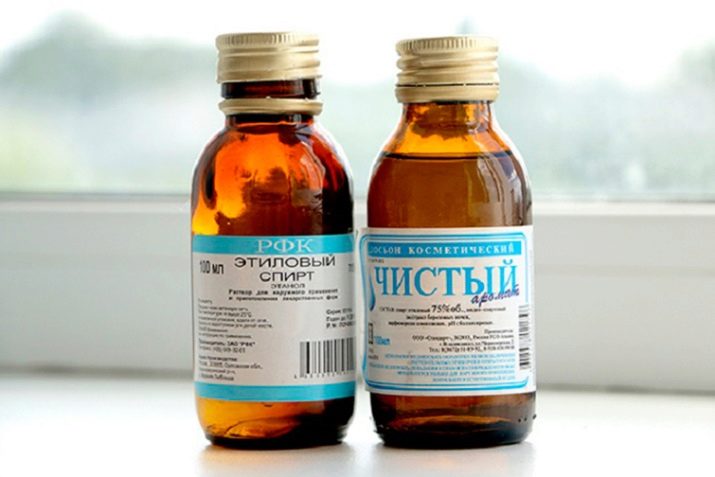Modern technologies of nail art today are still in their development stage, and therefore almost every month new items in this industry appear on shop windows. Today, strong coatings from gel and acrylic are in great demand. For this reason, masters who are just beginning to learn the basics of manicure art should turn their attention to the most well-known nail bonders and find out what preparations are and how they should be used.
What it is?
Bonder is a special tool for quick degreasing of the nail, it has high bonding characteristics and helps to easily fasten the nail plate prepared for these purposes and the materials that are selected during the subsequent extension. Bonder (it is often called simply “bond”) must be applied with a special brush and very carefully, so as not to get into the cuticle with the tool, otherwise all the work will have to be done first. A high-quality product from a well-known manufacturer always reliably falls on nails and does not allow the possibility of exfoliation of the applied artificial materials from the nail for a long time.
Bonder can be translated as “bonding”. Bonder for nails is different gel structure, its effect is often compared with the properties of the well-known double-sided tape. Bonder in manicure should be applied over the primer in order to even more qualitatively fasten the growing material with a natural nail.
Benefits
When working with a bonder, it is not necessary to forget that the better you pick up the “bond”, the more beautiful the manicure will come out, which will please its owner with a long application. Protect nails from rapid exfoliation, to create the most protective layer on the nail surface - all this can properly selected nail bonder.
This is actually a very useful tool that has the following advantages:
- it will ensure maximum adherence of the two surfaces to each other;
- guarantees a smooth coupling of the nail plate and any modern artificial materials;
- with the help of its own sticky structure, it is easy to distribute an equal layer throughout the entire nail;
- Bonder will create a strong layer between the natural nail and the gel layer.
The composition of the selected Bonder will always determine the quality and properties of the product: the better it is, the more reliable it will be to interlock with almost any possible surface. Therefore, it so firmly hold the gel and acrylic, liquid tips and plastic products, as well as many other options for nail design. Using this tool, you will receive the most effective and most durable fastening of the accrued nail to the real nail surface, prevent the separation of living tissues of the nails and prevent delamination of the accumulated materials.
disadvantages
This unique tool has some disadvantages:
- when applying a bonder directly to the nail, the drug can seriously damage its structure;
- Since Bonder initially has a rather sticky gel surface, it will definitely require high-quality drying under a UV lamp.
Varieties
Most often in the manicure technique there is an acid-free remedy. It is universal and therefore suitable for any known types of coatings, it has absolutely no shades, it is actively used on completely healthy nails.
Acidic preparation is selected if the master will work with acrylic, as well as in the case of damaged nails. The product after application will leave a certain percentage of yellowness, so you should not use it if you are going to use a completely transparent or colorless coating after it.
What is the best modern nail bonder, only an experienced manicurist can answer you. The most popular among consumers are several well-known brands.
- American company In'Garden. The product it produces ensures high adhesion strength of the materials used. There are no acids in it, and any possibility of harming the nails by this means is excluded.
- IBD Bonder Gel. It has a sticky base that guarantees long-lasting and durable gluing of any possible gels with a living nail.
- Products of the American brand EzFlow characterized by high cost, but at the same time amazing quality.
- Orly nail bonder - dries quickly, leaving a rubberized layer on the nail. It protects the nails from possible chipping and creates a pleasant appearance.
- Bonder infinity bonder from the well-known brand Nubar has a unique formula that does not contain harmful components.
The Japanese CBF can be called a very successful novelty. It has a transparent structure, suitable for any type of building, helps to create excellent hardness of the coatings on the nails.
What is different from the primer?
Consider what a drug like Bonder will differ from the well-known primer. Although sometimes beginner masters believe that there are no particular differences between them, but this is not so.
- Primer needs to cover the nail quite a bit - just for a certain protection of the nail from the harmful effects of other means. This composition forms a specific barrier film that will prevent various harmful components from getting inside the nail.
- The primer has the ability to "wash off" from the nail all existing contamination, as well as excess moisture and grease.
- The primer is something like a primer, a solid foundation for subsequent manipulations with the nails.
- It can be both acidic and acid-free.
- Dries primer alone in just 10-15 seconds.
As soon as the primer dries, it will be necessary to apply bonder on the nail. It was he who glued the materials chosen by the master to the natural nail, fully ensuring their even grip. Since this tool has a pronounced structure of the gel, for its full drying it is necessary to move the nails for 5 minutes under the UV lamp.
The main differences from the primer bonder:
- it can only be applied after the primer is 100% dry, as if the bonder is applied directly to the nail, it can seriously damage it;
- the sticky structure and consistency of the gel will require drying under a UV lamp.
The ideal bond can only be with the work with both means. Any options for replacing the bonder with a primer and vice versa will significantly reduce the quality of the manicure produced. Failure to use the primer can simply result in damage, and perhaps even the destruction of the living nail when removing the gel layer.
A complete rejection of the bonder or an attempt to replace it with glue most often ends with a peeling of the manicure after a few hours. In order to choose the right product, it is necessary to pay attention to the company that launched the product, and its reputation, the cost of the product, its consistency. It is best to opt for those products that in the process of building an artificial nail will only help create the most strong and beautiful manicure.
How to use?
So that a tool such as Bonder, perfectly and without any complaints, performed all the declared functions, need to know well how to use it correctly.
- First, the nail plate polished with high quality, gently applied to the cuticle and in the area of the nail rollers.
- A very thin layer of primer is applied very carefully to the nail, which should dry out in a few seconds.
- Next, a neat layer will need to be applied Bonder, while ensuring that the tool does not numb along the edges, do not fall on the cuticle. After applying the nails are sent under a UV lamp until completely dry.
What can be replaced?
Experienced experts claim that there is no full-fledged alternative for such a tool as Bonder. Beginners often ignore this tool, but soon they themselves become convinced that the quality of such a manicure without the use of a bonder will seriously suffer. Primer and Bonder complement each other and cannot be used alone or interchangeably.
On the Internet, you can find tips that for high-quality degreasing of the nail plate without problems you can use nail polish remover (the main thing is that it contains acetone). This advice can be applied, but only for degreasing: acetone, in fact, qualitatively dry the nail. However, before using the tool, you will need to make sure that there are no oils in the composition - their presence is highly undesirable.
Instead of a degreasing agent, you can also try using homemade vinegar or alcohol, but again - just to dry the nails well. You have to understand that no home remedy can cope with such a difficult task as raising the scales of the upper layers of the nail to guarantee maximum adhesion of the materials to be used.
Boric acid and cologne are sometimes called an alternative to bonder - to significantly save on the purchase of materials.
However, you should know that the cost of the bonder is not too high. Consumption of this tool is generally minimal for one procedure, so you should not neglect buying for your arsenal a very large bottle of bonder.
See the following video for differences between primer, bonder and dehydrator.

